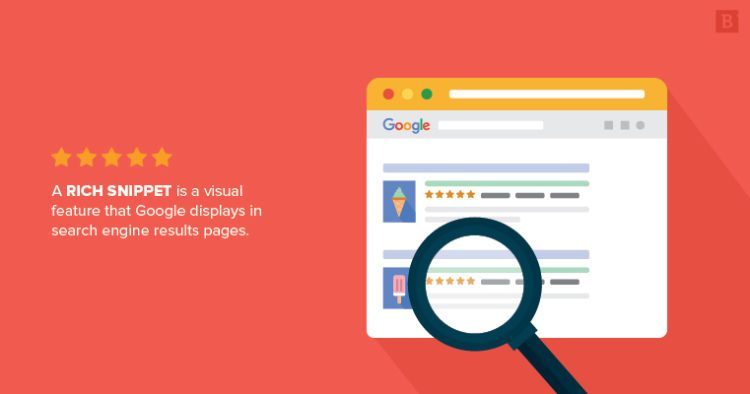No products in the cart.
Digital Marketing
June 2020 SEO Digest
June 2020 SEO Digest
I hope your second quarter of this year goes the way you planned. Last month created a loud noise for SEO experts. But today, we know a lot more about the changes that were not clear last month. Information and guides for this month digest will help us get back on track.
This month we will try to deep dive into May’s Google Core Update, the link building strategy and breakdown of few data from rich snippets.Let us learn how to succeed with our content strategy, create SEO friendly URLs and how to create a link building approach for businesses. Lastly, we will also cover this month humor about the real culprit of keyword ranking fluctuations, the closing notes of May 2020 from Google and how web vitals replace speed report in Google Webmaster Tools or search console.
MAY 4TH GOOGLE CORE UPDATE ANALYSIS
Surfer SEO provides us the first analysis on what will likely be changing in May Google Core Update. It was a big one and were felt across most niches.
Source: Surfeseo.com
Presented by SurfSEO, each keywords were analyzed against the following ranking factors:
– domain organic traffic
– referring domains
– exact keywords density
– partial keywords
– keywords in title and H1 tag
– page speed metrics
– word-count
They tracked in order to determine the each content of every pages that lost or won during the update. This results to an interesting conclusion for the future:
– On average, winning pages had more authority than losing pages
– 60% more backlinks earned by the winners than losers
– 10% less content winning pages have compared to losing pages
– Winning pages seems to be less “optimized” compared to a losing page.
Reading the article released by Surfer SEO, it seems that Google is moving away from ranking signals that are easy to achieve including those exact matched keywords. This could be difficult but it may be a good starting point for our optimization efforts. Link building seems to dominate, so let’s take a look on more data so we are doing the right approach.
CONSIDERING A DIGITAL PR AS OUR LINK BUILDING TACTIC
Instead of guest posting or collaborations, Digital PR campaigns targets those earned media coverage from online sites. The aim is not just about the links built from the published story but also the people engaging and sharing the story.
This strategy and result have been tested by several people at Digital Loft in UK. They have checked the ratio between No-follow and Follow links earned from Digital PR. The data was collected through a thousand digital PC campaigns. Most of them were provided from the agency itself and the rest were drawn from on-going case studies.
They discovered:
– This type of campaign gains an average of 50 links.
– Three fourths came from websites having a DA between 20 and 70.
– Lesser ratio from nofollow links
– DPR campaign increase up to 1000+ social engagements
These results will mean a lot to us if we have the budget to start with a digital PR campaign. We might need to focus on saving that budget for our digital PR campaign including the best possible snippet to attract attention.

WHAT YOU NEED TO KNOW ABOUT SNIPPETS IN 2020
Few years ago, rich snippets has been the focus of brands online. SEOBility is kind to show their analysis about claiming snippets and how it runs this year. This case study covers few practices best in claiming snippets. It also examines how we use schema, whether Google recognizes it or not.
Significant areas to remember to those who wants to take control of rich snippets:
– For ‘how-to’ content results, less than 20% are using the how-to schema.
– In this case, Google also failed to recognize rich snippets even the first top 5 results have schemas perfectly implemented.
– If a website has a DA of 70 or more, rich snippets should be present.
The case study is from a small group of keywords but with significance. There are lots snippets left to discuss on our next chapter of learning about rich snippets.

RESONATE YOUR CONTENT WITH THE RIGHT AUDIENCE
Rank Fishkin of Sparktoro finds a new strategy on how we can improve our content more efficiently. Started in breaking down the boundaries when building and measuring how content converts. He pointed out that audience are coming from different channels like:
– Those who have visited or purchased already
– Those who are potential customers that relates your content
– The amplifiers such as other bloggers, influencers, event organizers, journalists that mentions your content
– Content consumers that are involved within your community
Fishkin claims that marketers must realize that audience interested in content can be huge compared to a customer looking for a product. Not every readers are considered to be potential buyers but something to be valuable as supporters or your amplifiers. Why leading your content to non-customers? Because they can be utilized and massively helpful in spreading your brand and building your content that can reached more people.
THE SEO FRIENDLY URLS
We always know that Google prefers short and easy to remember web URLs, but until now many have struggled to realize what it means to have a simple URL implementation. We will talk briefly about Ahrefs presented their interpretation of an optimized URLs. It is well-explained how we can apply it in bulleted points:
– URLs are optimized when special characters are removed
– Limiting the use of numerals
– Optimized URL boils down to a short keyword phrase
– A lowercase URLs
– A sentence-like URL
Aside from optimizing URLs, Ahrefs provide a list of recommendations about how we can optimize the anatomy of URL base on protocol, subdomain,slugs etc through:
– Using HTTPs
– Choosing a top-level-domain carefully
– Subdomains when necessary
– Avoiding repetition of keywords
– Not to include dates in URL
The link resource from Ahrefs are straight forward and easy to implement. Next part is we will talk a more theory-drive approach to link building.
LINK BUILDING USING A BIA (BUSINESS INTELLIGENCE APPROACH)
Cody West from Traffic Think Tank talks about the benefits of have the best link building strategy. The BI (business intelligence) method utilize data and situations to determine the main goal while reducing risk. Cody breaks down how to create tactical and profitability consideration that transforms to a superior plan. Your link building approach should answer and relateto the questions below:
– How do you choose a significant link from an external website
– How many links to build in order to close the DA gap
– What type of budget is needed
Many SEO guru noticed that local ranking become volatile in April 2020. It was just about the orders were changing, but they were also irregular. The ranking position seemed to be fluctuating drastically. Second wave of fluctuation also happened in mid-May 2020 where Google officially announce a May 2020 core algorithm update where everyone suspect it as the main reason.
Few weeks later, the situation has never been settled. On a local search forum tracked a hundreds of SEO observation using their own data. However, just recently we found some answers. In response to our complaints, it seems Google has explored and provide the announcement about the bug and was resolved. Base on the announcement, seems all the signals appear to have returned to its normal state. Knowing that, we will cover some areas that were involved in our next blog post.

GOODBYE SPEED REPORT IN SEARCH CONSOLE
Core Web Vitals have replaced Speed report in Google Search console on May 5th. We just have a short time in getting used to this new replacement. This metric shows how Google sees your pages and how it performs. We can see that it has a wider scope compared to the old Speed report.
I will mention here the 3 metrics why we said that this new feature has a wider scope. See below:
– Largest Content Paint: it measured website loading performance. The LCP will occur once a page on your website starts loading.
– First Input Delay: Your website should have a first input delay of not more than 100 milliseconds. This will measure its interactivity from homepage to inner pages.
– Commutative Layout Shift: Your website and its pages should maintain a layout shift of less than 0.1. This measures visual stability of a website.
If you are not paying attention and checking your website in Google search console regularly, it might be the best time to dig in. This new metric is capable of showing us a detailed measurement compared to the old one. This new metric can all help us what needs to be changed immediately.


